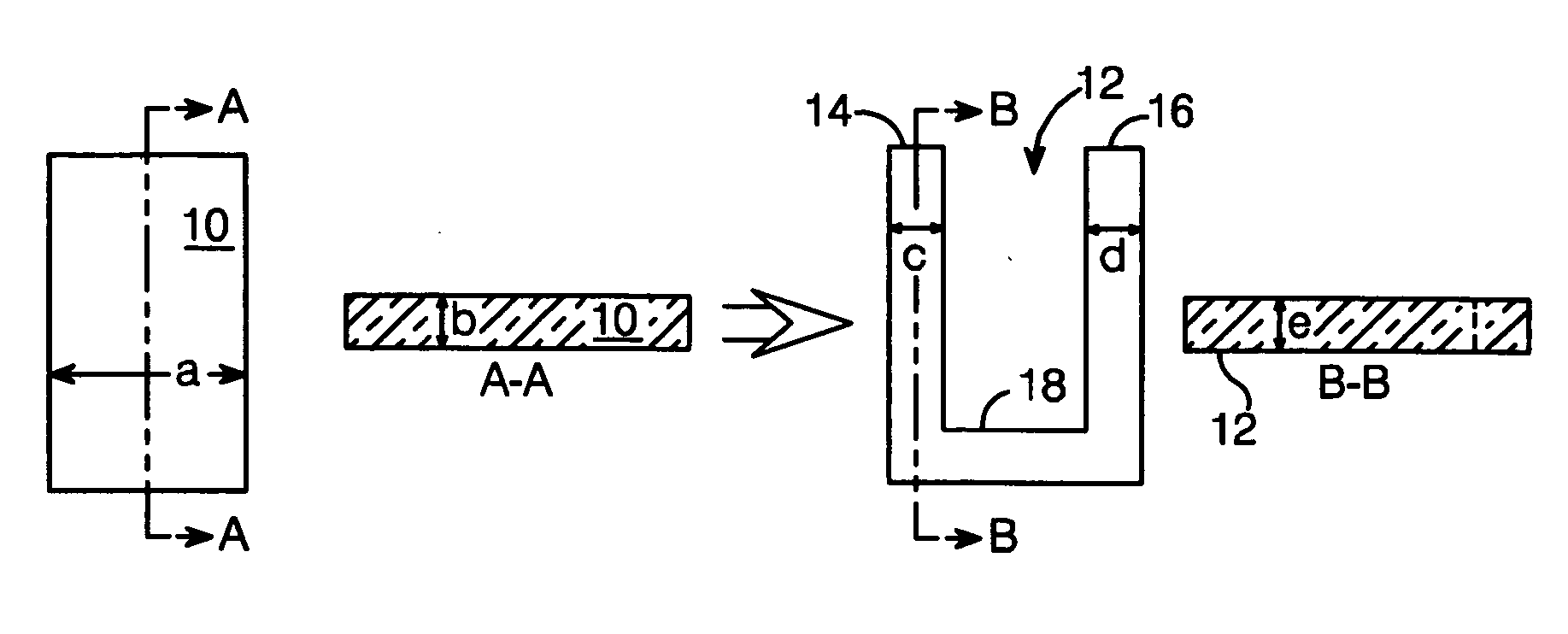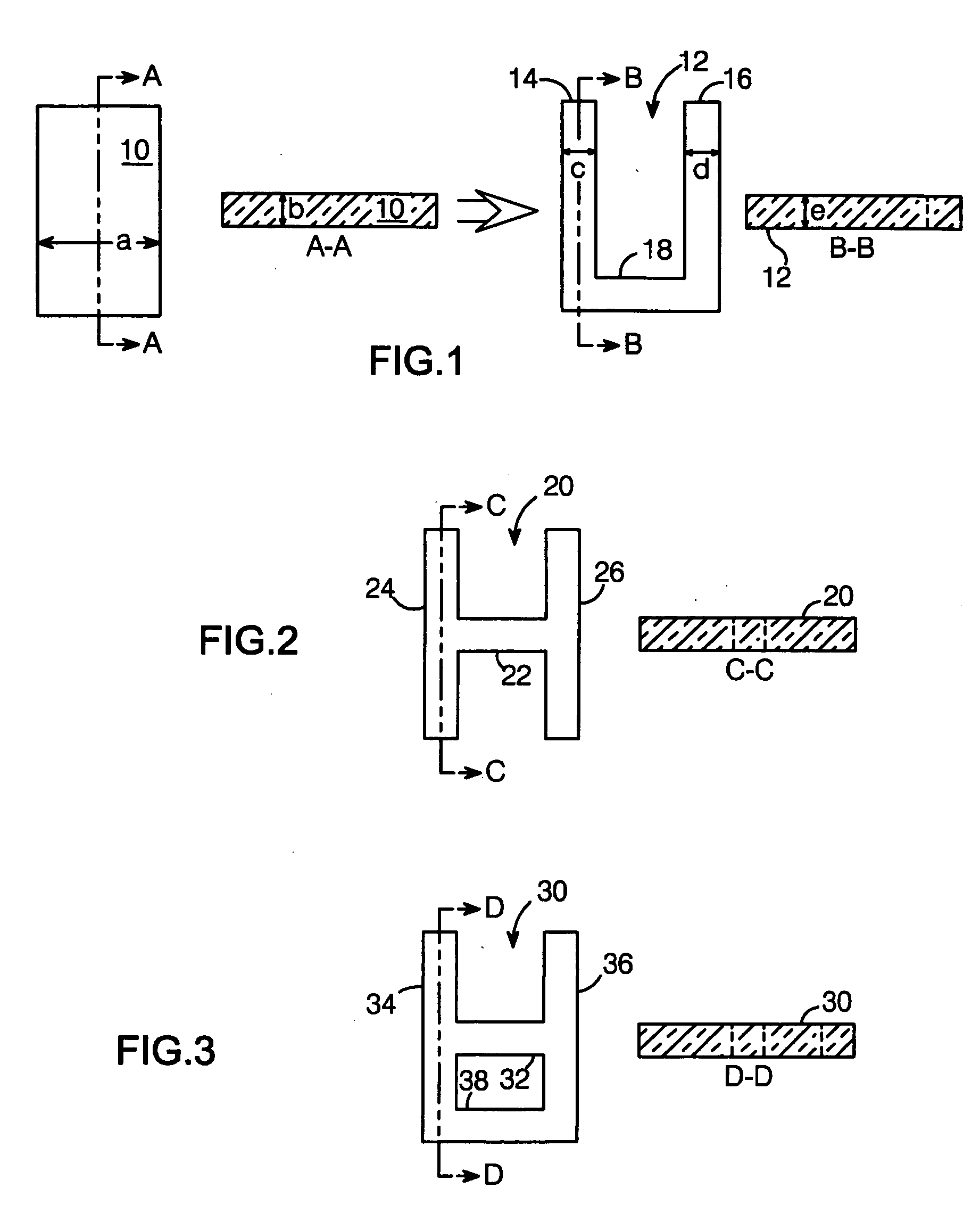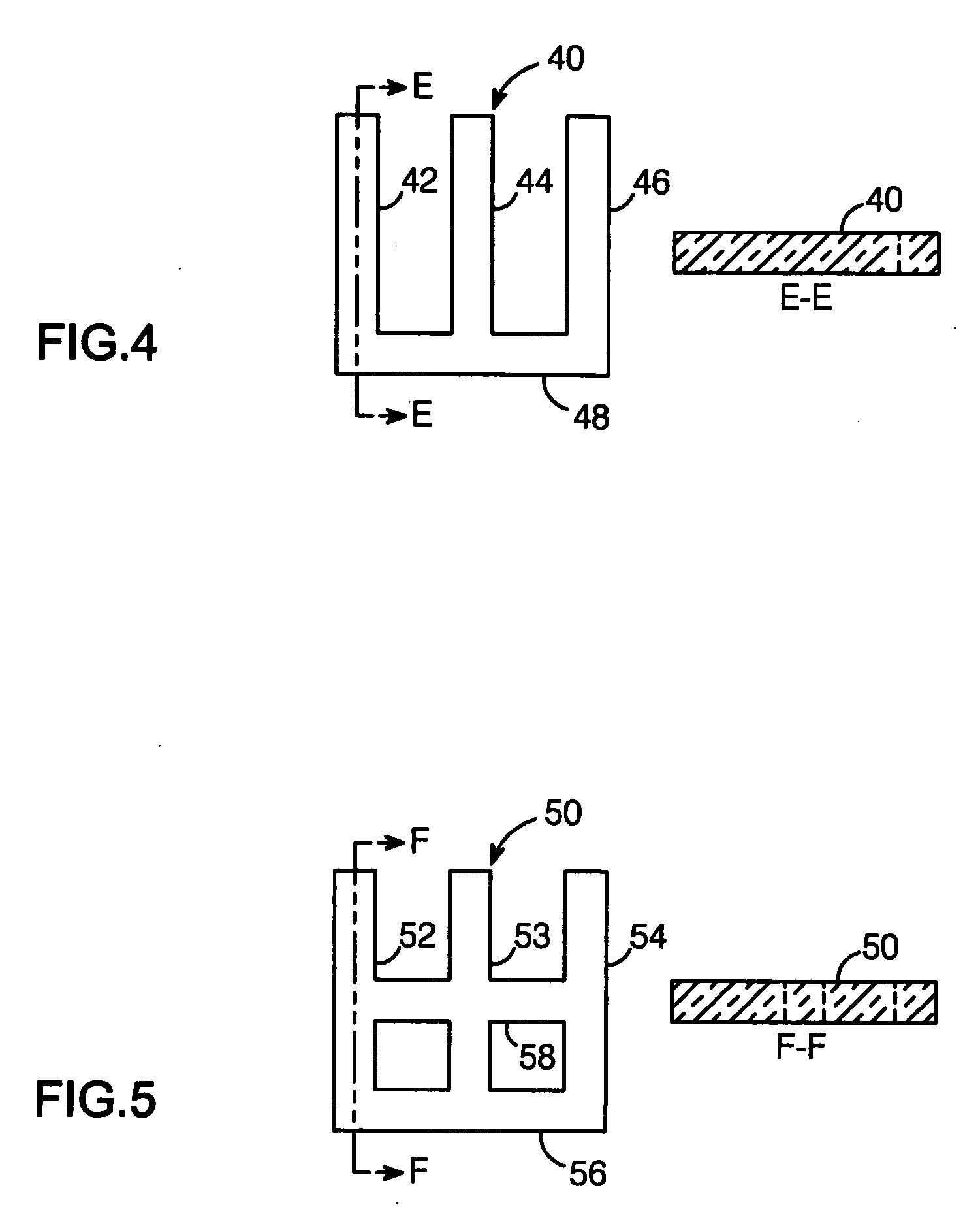Signal-carrying flexure structure for micro-electromechanical devices
a micro-electromechanical and signal-carrying technology, applied in the direction of generators/motors, acceleration measurement using interia forces, instruments, etc., can solve the problems of power dissipation and thermal management, power loss and other problems of signal-carrying mem flexure, and achieve the effect of small spring constant and low resistan
- Summary
- Abstract
- Description
- Claims
- Application Information
AI Technical Summary
Benefits of technology
Problems solved by technology
Method used
Image
Examples
Embodiment Construction
[0019] The basic principles of the present MEM signal-carrying flexure structure are illustrated in FIG. 1, which includes a plan and sectional view (cut along section line A-A) of a conventional solid flexure 10, and a plan and sectional view (cut along section line B-B) of a flexure structure 12 per the present invention. As used herein, a flexure is a flexible member, with beams being the most commonly-used type of flexure in MEM devices. Flexure 10 and flexure structure 12 have associated spring constant and resistance parameters. The spring constant of a free standing flexure is proportional to the flexure's width to the third power; i.e., k α a3*b, where a is flexure width and b is flexure height. Resistance and inductance, on the other hand, are linearly proportional to the inverse of flexure width; i.e., R,L α 1 / (a*b).
[0020] A signal-carrying flexure structure per the present invention is constructed from multiple, narrow flexure segments which are coupled together to form ...
PUM
 Login to View More
Login to View More Abstract
Description
Claims
Application Information
 Login to View More
Login to View More - R&D
- Intellectual Property
- Life Sciences
- Materials
- Tech Scout
- Unparalleled Data Quality
- Higher Quality Content
- 60% Fewer Hallucinations
Browse by: Latest US Patents, China's latest patents, Technical Efficacy Thesaurus, Application Domain, Technology Topic, Popular Technical Reports.
© 2025 PatSnap. All rights reserved.Legal|Privacy policy|Modern Slavery Act Transparency Statement|Sitemap|About US| Contact US: help@patsnap.com



